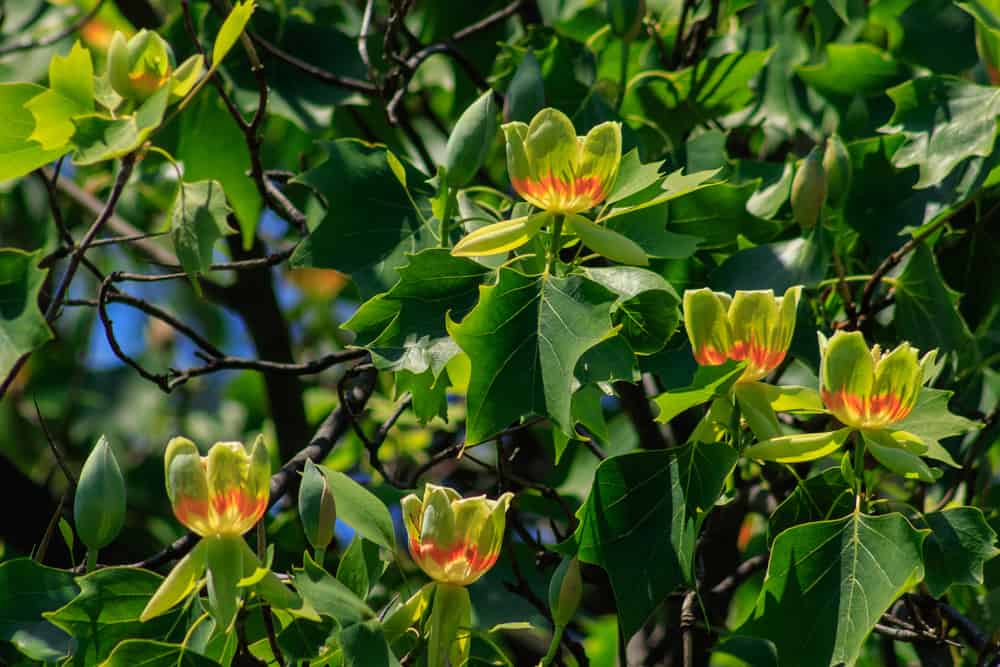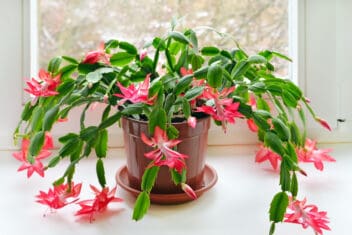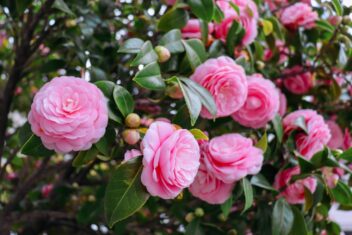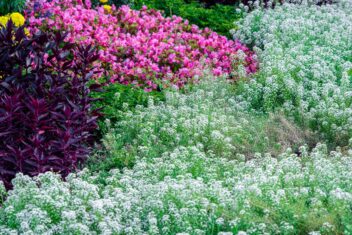If you can’t get enough of the look of tulips, how about a tree smothered in tulip-like flowers? Growing tulip poplars, also known as tulip trees, lets you add fast-growing shade and color to your garden.
These magnolia relatives have bright yellow blossoms that look similar to the familiar ground tulips that pop up each spring.
Native to North America, these trees combine massive scale with delicate beauty. Ready to learn all about them? Let’s go!
Varieties of Tulip Trees
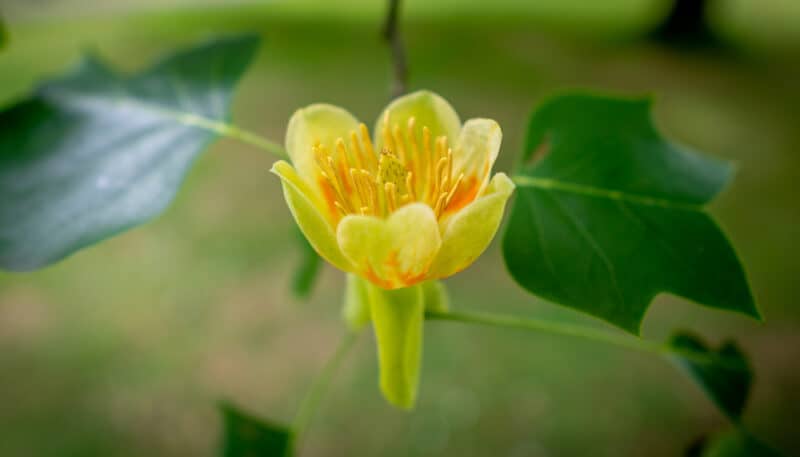
Tulip trees aren’t related to tulip flowers (Tulipa spp.) and are part of the magnolia family (Magnoliaceae).
There are two species of tulip trees: the Chinese tulip tree (Liriodendron chinense) and the American tulip tree (L. tulipifera). Chinese tulip poplars grow to about 130 feet tall and are less hardy than the North American native tulip tree. Native to Asia, they are cultivated in North America.
American tulip trees grow up to 190 feet tall and are native from the north of Florida to New York and as far east as Louisiana.
There are many cultivars of both that you can commonly find in nurseries:
- Ardis (L. tulipifera ‘Ardis’): Compact growing at just 60 feet
- Majestic Beauty (L. tulipifera ‘Aureomarginata’): Shorter than the species with yellow and green variegated leaves
- Arnold (L. tulipifera ‘Arnold’): Early flowering with a columnar shape
- Fastigiatum (L. tulipifera ‘Fastigiatum’): Narrow form that grows just 40 feet tall
- Contortum (L. tulipifera ‘Contortum’): Features contorted leaves with undulating margins.
Tulip trees are easy to recognize as they are some of the tallest trees in Eastern North America, and their narrow, tall, green buds that open into yellow, orange, or white tulip-shaped blossoms. You can expect the trees to bloom in spring and summer.
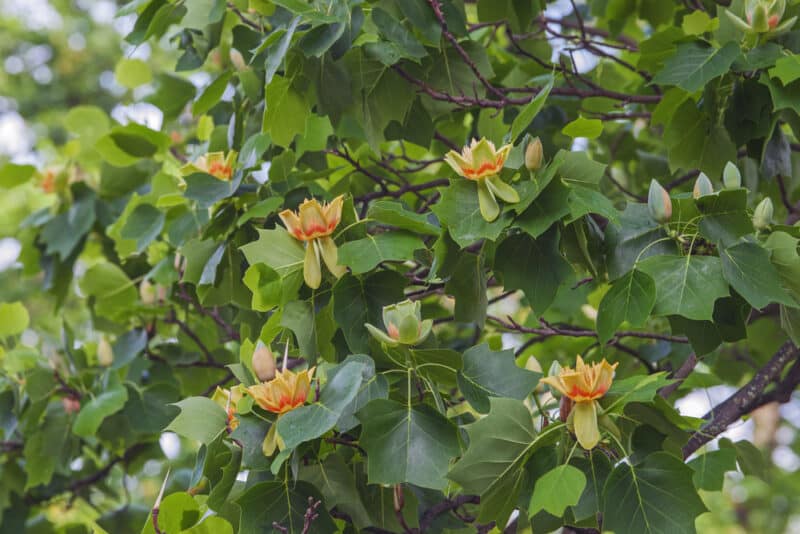
During their growing season, you will see lots of wildlife on the flowers, including butterflies, bees, and birds. The flowers are pollinator magnets. So, if you have small children, you can go butterfly-watching with them when your tulip tree is blooming!
The bark and roots have been used throughout history as a tonic and an edible. Native Americans made beer out of the roots and harvested the sap. You can sip the abundant nectar out of the cup-shaped flowers, as well.
The leaves are large and can grow up to eight inches long. They have an unusual shape, which is heart-like or somewhat square. The leaves are lobed with four horns.
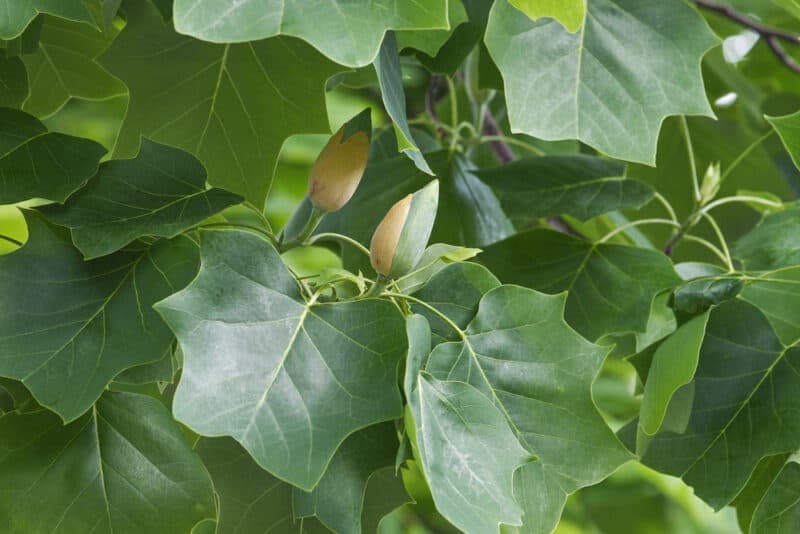
As winter approaches, the leaves turn pale yellow before dropping. The large graceful trees offer up architectural interest even when they’re bare. Growing tulip poplars means you get four-season interest in your yard.
Propagation
You have several options for propagating tulip poplars. You can buy a live plant or bare root from a nursery or online or propagate cuttings or seeds.
Growing Cuttings
It’s easy to succeed at growing tulip poplars from cuttings.
Tulip trees should be propagated via softwood cuttings. Take a soft, young branch from last year’s growth and cut off the five to six-inch tip. Dip the end in rooting hormone and remove any leaves but the top two.
Place the cutting in potting soil in a six-inch pot.
Cover the cutting in the pot with a plastic bag or other clear cover to retain humidity. Place the pot in indirect sunlight and leave it for about a month.
After four weeks, you can test the roots by pulling slightly on the cutting to see if it resists. When you feel the roots are established, you can transplant the plant into the ground after the last projected frost date and start growing your new tree!
Propagating Seeds

It’s possible to propagate tulip trees with seeds, but it’s a bit more time-consuming. Harvest the samaras (winged seeds) in the fall when they’re brown and dry. The seeds are housed in long, pointed fruits that wildlife love, so grab them before squirrels do.
Allow the fruits to dry out and then peel them open and pluck out the seeds. Keep the seeds in a dry, cool space like a refrigerator or unheated basement.
About five months before the last projected frost date in your area, place the seeds in moist sand and put them in the refrigerator. Keep the sand moist for the next 60-90 days.
Plant the seeds in potting mix in a six-inch container and moisten the soil. Keep the soil moist and place the containers in a spot with bright, indirect sun. Germination takes a few weeks.
Harden the seedlings off and plant them in the ground after the last frost. Congrats! You’re growing tulip poplars from cuttings!
Planting Tulip Trees
The ideal position for tulip trees is somewhere with sunlight exposure and protection from the wind. Remember that this tree grows quickly, so you don’t want to plant the tree in a small corner.
Plant after the last projected frost date in the spring when the soil can be worked.
Look at the root ball and dig a hole that’s double its size to provide extra space for growth but ensure that it’s secure in the soil. If you’re planting a bare-root tree, soak the roots in water for a few hours before planting.
Then, place the root ball into the ground and cover it with soil mixed with well-rotted compost. Water well to keep your growing tulip poplars happy.
Caring for and Growing Tulip Poplars
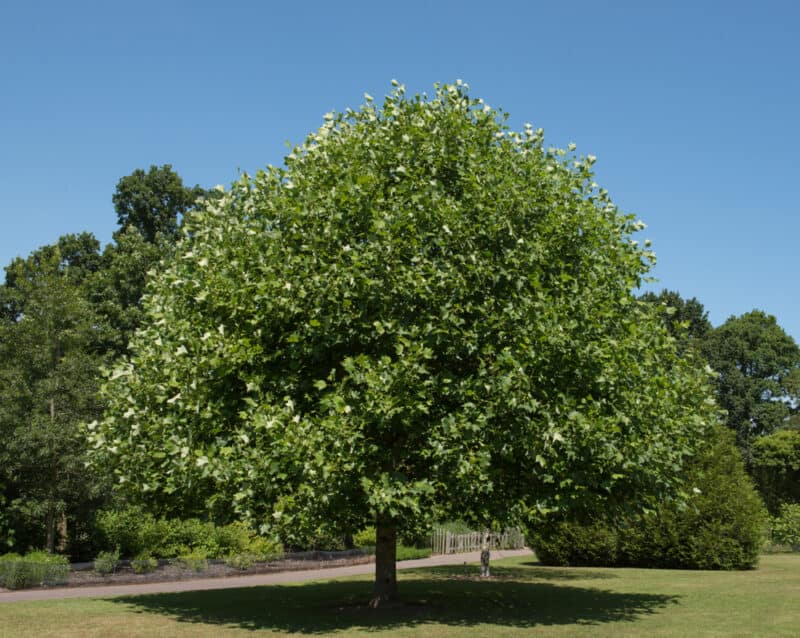
Soil will make or break the quality of your tulip tree. In the right soil, the tree will grow rapidly but won’t be weak, and you’ll have plenty of happy flowers. The tree will be stunted in depleted or poorly draining soil, and it might not flower well.
You need slightly acidic, well-draining soil. The pH levels should be between 5.0-8.0, with rich, loamy soil preferred. However, they can tolerate a bit of sand or clay, but the soil must be well-draining, or the tree may suffer from root rot.
Fertilize your tree four times per year during the growing season, starting in early spring. You can use slow-release stakes or liquid fertilizer. You can find both liquid fertilizer and stakes made specifically for trees. Jobe’s fertilizer spikes, for instance, are perfect for the job.
Fertilizing young trees is particularly crucial as they need extra nutrients to grow. You should still apply fertilizer to an older tree, but it isn’t as vital, so if you miss a year or two it won’t ruin everything.
Water and Temperature
Be mindful of the moisture in the soil when you first plant. Younger trees are more sensitive to drought. As the tree matures, you don’t need to be so diligent. The tree will send out deep roots to find moisture.
Be prepared to take more time watering your growing tulip poplars when summer starts.
One sign that your tulip tree needs water is if the leaves start dropping prematurely. If you notice leaves falling before winter, it could be a sign that you need to increase your water schedule.
Otherwise, just use a moisture meter to check the moisture level in the soil. Water when the top three inches dry out.
USDA Hardiness Zones 4-9 are ideal for this plant.
Pruning Tulip Trees

Pruning is critical for the health of your growing tulip trees. These trees grow quickly and can quickly overtake a space. Pruning helps you keep the tree at a suitable height and allows you to keep the canopy open and appropriately shaped.
Tulip tree branches can break in strong wind, so take the time to prune them. If you don’t have enough time for pruning, you can always look into hiring a service to come and look after your trees. Just don’t skip it, or you’ll find broken branches after the next windstorm.
You should remove dead or broken branches when you spot them. Winter and early spring are good times to prune your tree as the growing season hasn’t started yet, and you can make them look neat for the warm months.
Common Tulip Tree Pests and Diseases
Luckily, growing tulip trees are resistant to most pests and diseases, but some issues can still arise with this plant. Stressed trees are more susceptible to problems. For instance, pests can attack the plant if the tree doesn’t receive enough water, nutrients, or light.
Yellow Poplar Weevils
Yellow poplar weevils (Odontopus calceatus), or sassafras or magnolia weevils, are small, blackish-brown insects commonly found on tulip trees. These pests leave large holes in the leaves and can burrow into the leaf tissue.
Use an insecticide to prevent or treat these pests and ensure the tree is well pruned.
Aphids
Aphids suck the sap out of plants and leave behind a sticky honeydew that will drip all over your car, furniture, or anything else under your tree.
A large infestation will turn the leaves of your tree yellow and may cause them to fall from the tree.
Wingless tuliptree aphids (Illinoia liriodendri), in particular, love tulip poplars. Head to our guide to learn how to deal with these pests.
Tuliptree Scale
Tuliptree scale (Toumeyella liriodendri) isn’t a disease but a softscale pest.
A stressed plant will worsen the damage these insects can do, so you should prioritize keeping your growing tulip trees as healthy as possible. Learn how to deal with scale in our guide.
Beyond these pests, growing tulip poplars is pretty straightforward. Keep your tree
